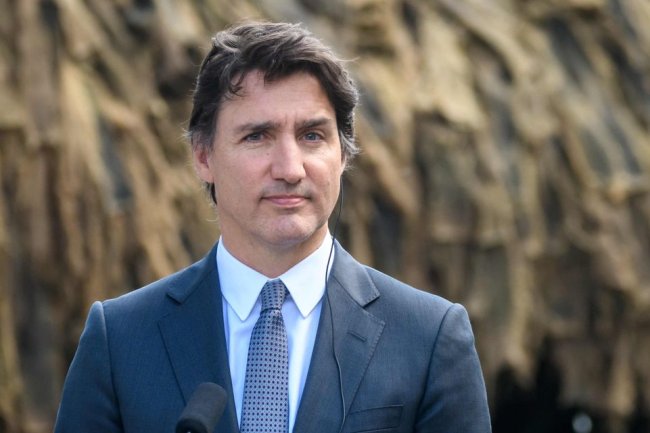Doctor’s Office Care at Hospital Prices
Consolidation of medical practices brings dishonest billing that costs patients and taxpayers billions. By Bobby Jindal and Charlie Katebi July 26, 2023 6:14 pm ET An exam room in San Jose, Calif., March 22, 2018. Photo: elijah nouvelage/Reuters Each year millions of patients visit their doctors’ offices for a variety of routine services. But in recent years more Americans are being charged as if they had visited a hospital. This is because the doctor’s office billing them is pretending to be a hospital. When a hospital bills a patient’s insurer, it must report a federally required National Provider Identifier number on the claim form to identify where the care took place. Many hospitals use the same NPI number for care that happens at a doctor’s office as at the main hospital, allowing hospitals to add a facility fee


An exam room in San Jose, Calif., March 22, 2018.
Photo: elijah nouvelage/Reuters
Each year millions of patients visit their doctors’ offices for a variety of routine services. But in recent years more Americans are being charged as if they had visited a hospital. This is because the doctor’s office billing them is pretending to be a hospital.
When a hospital bills a patient’s insurer, it must report a federally required National Provider Identifier number on the claim form to identify where the care took place. Many hospitals use the same NPI number for care that happens at a doctor’s office as at the main hospital, allowing hospitals to add a facility fee and charge far more than they would for a doctor’s visit.
In Ohio, one retiree was charged a $1,262 hospital facility fee for receiving arthritis treatments in an outpatient clinic. The patient’s share of the bill increased tenfold compared with what she had previously paid for the same procedure provided by the same doctor in the same building. In Colorado a patient was charged an $847 facility fee for a telehealth consultation.
More Americans than ever are paying these dishonest fees as large hospitals buy up the practices of local physicians. A report by the Physician Advocacy Institute found that the share of hospital-owned physician practices more than doubled, from 14% to 31%, between 2012 and 2018. By 2020 more than half of physicians worked directly for a hospital or at a physician practice owned by a hospital, according to the American Medical Association.
As a result, hospitals’ exorbitant facility fees have driven up the cost of outpatient care. An analysis by the Committee for a Responsible Federal Budget found that after a hospital buys a physician’s practice, the price of numerous healthcare services—including MRI scans, drug infusions and chemotherapy—doubles or triples.
Fortunately, states are working to protect families from the crushing burden of dishonest medical bills. In May, Indiana Gov. Eric Holcomb signed legislation requiring hospitals to disclose to insurers the location where care is performed to ensure that hospitals are appropriately billing patients and ensure patients aren’t billed for surprise hospital facility fees.
In Washington, lawmakers are following Indiana’s lead and working to enact common-sense hospital billing reform. The House Energy and Commerce Committee and Education and Workforce Committee have passed several measures to end dishonest billing nationwide. Like Indiana’s reforms, these measures would require every off-campus facility within a hospital system to have its own identifying number to help insurers determine where patients receive care and crack down on facilities that engage in dishonest billing.
A bipartisan group of lawmakers is introducing promising proposals to bring similar reforms to Medicare through site-neutral payment reform. In May, Sens. Mike Braun (R., Ind.), Maggie Hassan (D., N.H.) and John Kennedy (R., La.) introduced legislation to equalize Medicare payments between hospital-owned physician offices and independent offices.
Currently, Medicare pays hospital-owned facilities two to three times as much as independent physician offices for the same service, according to the Alliance for Site Neutral Payment Reform. This creates an enormous incentive for large hospital chains to acquire outpatient practices. Consolidation creates a vicious circle in which larger hospital systems can demand ever higher rates from insurers and also have the capital to buy up physician practices. Removing this perverse incentive will ensure that patients have access to trusted doctors and appropriate care at the same price regardless of treatment location and remove artificial pressure to consolidate.
These bipartisan reforms would deliver hundreds of billions in savings for families. Site-neutral payments would save taxpayers more than $153 billion in Medicare spending over the next decade and also substantially reduce premiums and cost-sharing for Medicare beneficiaries by $94 billion, according to CRFB. In total, these changes could save patients and taxpayers between $346 billion and $672 billion over the next decade.
Large hospital systems have exploited our nation’s outdated billing systems to foist gigantic bills on Americans. Bringing much-needed transparency in hospital billing will deliver more affordable care and put patients back in control.
Mr. Jindal served as governor of Louisiana, 2008-16, and a U.S. assistant secretary of health and human services, 2001-03. Mr. Katebi is deputy director for the Center for a Healthy America at the America First Policy Institute.
Journal Editorial Report: The week's best and worst from Kim Strassel, Bill McGurn and Jason Riley. Images: Zuma Press/Invision/AP Composite: Mark Kelly The Wall Street Journal Interactive Edition
What's Your Reaction?






















